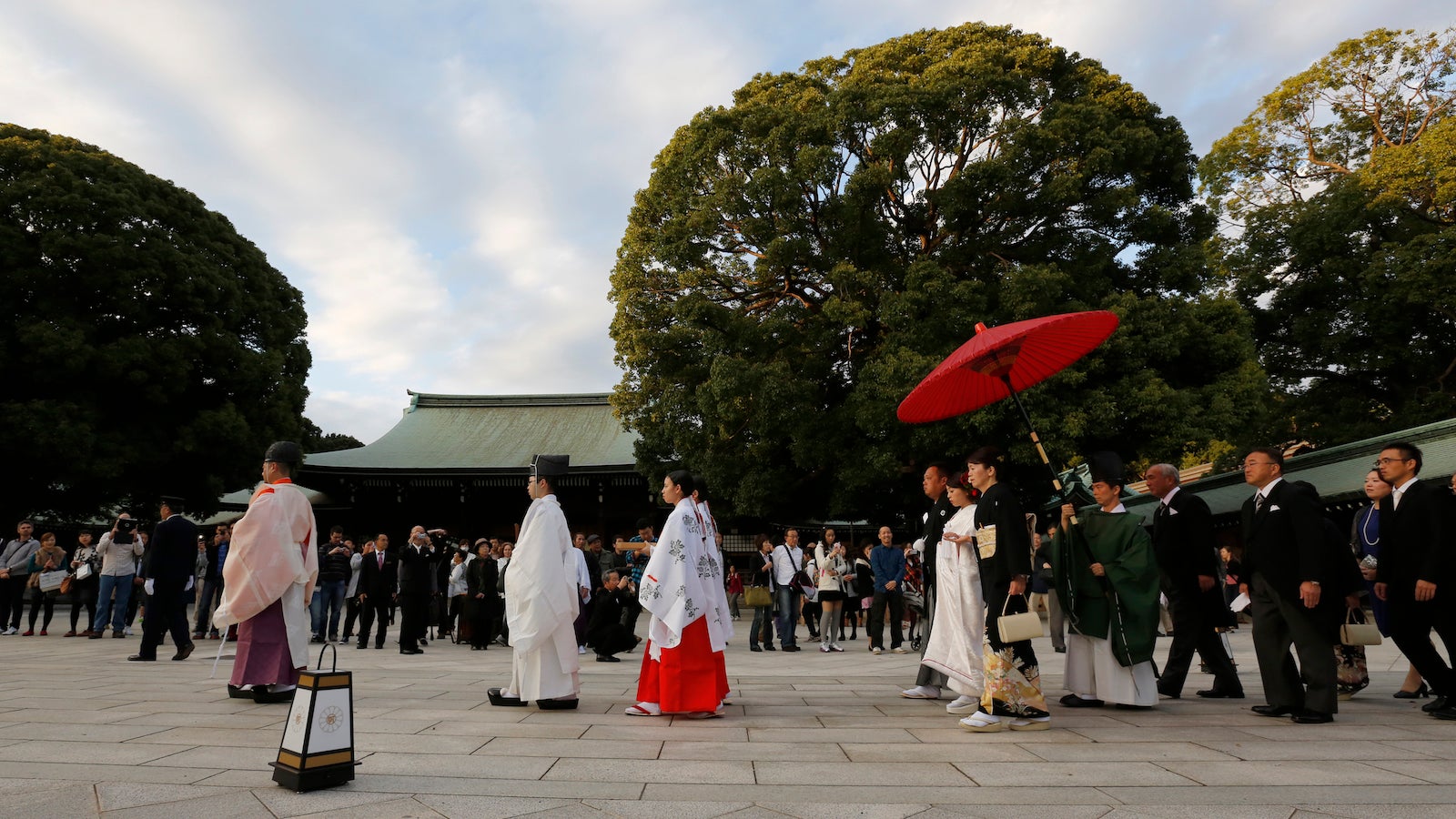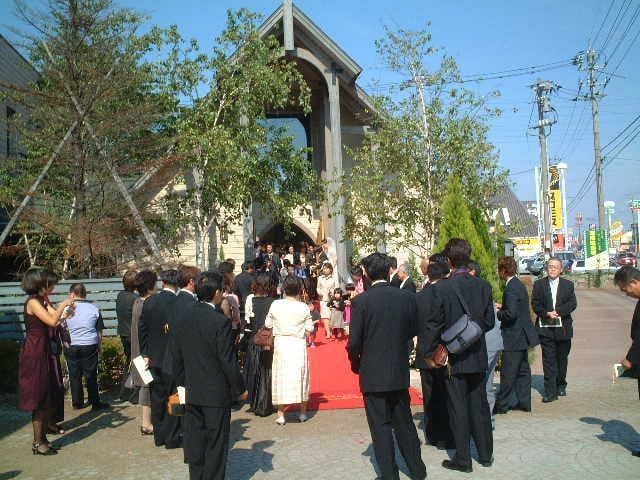I married over 900 people in Japan who wanted a white guy to fake a Western wedding
I have married 900 people in Japan.


I have married 900 people in Japan.
Back in the late 1990s and early 2000s, I moonlighted as a “fake priest” (偽牧師, nisei bokushi) and officiated 450 weddings without ever being ordained—or even being especially religious. I’m white, male, and I was available. And that’s really all it took to get the gig.
My unlikely career started when I got a phone call from a friend of a friend who had been officiating faux-Christian weddings deep in the Japanese countryside, about two hours away by train.
“That new hotel they built near your house, near that pub you like to go?” he said in an upstate New York accent. “The talent agency I work for needs a fake priest. You in?”
The money was good—the equivalent of $180 for exactly 90 minutes of work—and the talent agency had already faxed me a lineup of four or five weddings every weekend. All I needed to do was buy a cassock.
I was in.
At the time, I was working in the local school system as an assistant English teacher. I loved teaching kids “conversational English” but I was always looking for moonlighting gigs. Over the 10 years I had worked in restaurants, delivered pizzas, and worked in warehouses on the side of teaching. But this wedding gig would be my best-paying part-time-job yet. And my school would never find out.
Although only a fraction of Japanese couples are Christians, the majority choose Western-style “chapel weddings,” complete with white dresses and fake foreign priests. It’s hard to say why this style of nuptials are popular, but the 1980 wedding between Britain’s Prince Charles and Lady Diana, televised around the world, certainly helped popularize the practice. At that time Japanese baby-boomers were rich and looking to adopt Western practices, such as chapel weddings officiated by some who looked like a traditional minister or priest. It might also be because Western-style weddings are more creative and more relaxed than traditional Japanese-style weddings, which are very solemn and involve a Shinto priest (神主, kannushi).
But I didn’t realize quite was I was getting into until my friend helped show me the ropes. The hotel’s chapel was new and beautiful, with plenty of sunlight and blonde wood. A massive crucifix hung above the pulpit, right above my head. To my right the choir and the organists, all Japanese, were already in place and ready to go. I could see videos cameras positioned all around the room feeding into a production studio next door.
The bride and groom appeared at the doors of the chapel. It was time for rehearsal.

“Okay, first you enter with the rings tied on the satin pillow,” my friend prompted me. “Bow to the crucifix and then put the pillow on the podium there. Then bow to the attendees, and gesture for the groom to join you up front…”
My friend spoke in New York-accented Japanese to the groom, who had orange-dyed hair and a silver crown on his front tooth. His grip was strong and he smelled of cigarettes.
The groom then joined me at the pulpit. Now it was time for the bride. She walked down the aisle with her father, who would give her away. The bride and groom would then repeat their vows while exchanging rings. It was my job to explain what to do.
My Japanese was okay, but my script, which was written phonetically, was hard for me to read. My friend jumped in to explain and clarify in his New York drawl. The rehearsal ended just as the bride and groom’s confusion turned to fear.
Despite the rough start, I think I got through that first wedding okay. I stared at my script, barely looking at the guests who sat in the pews. The hardest part was remembering the names of the bride and the groom. That night, I showed my wife a videotape of my first fake wedding.
“You made a big mistake,” she said. “Instead of saying, ‘You may exchange rings,’ you said, ‘Put the ring in her crotch.’”
Although I worked hard to polish my Japanese, I always seemed to slip up. Names were mispronounced. The order of the ceremony was rearranged. One time, the rings slid off the slippery satin of the pillow. Each time I would get an angry fax from the talent agency.
It probably didn’t help that, while I lived just a block or two away from the wedding chapel, I also lived around the corner from a pub that sold 50 different kinds of local sake. I discovered stage fright was a great cure for a hangover.
Still, I kept doing weddings for several years. It was fun and lucrative, but eventually my rates got cut and I was booked for fewer and fewer gigs. In the early 2000s, the Japanese wedding industry was experiencing a boom, and more and more chapels were being built to capitalize on demand. Soon there was a competing chapel in my town that offered lower rates. Friends who still officiate weddings tell me this trend of expansion and market saturation has continued well into the current decade.
According to recent research, the wedding industry in Japan is worth about $13 billion ($1.5 trillion yen each year). However, smaller wedding venues with a smaller numbers of guests are becoming more popular, so fake priests who had received most of their business from one of the larger hotels are liable to be getting less work. But despite a sputtering economy, there is still demand for Western-style weddings.
“The family knows I’m not a real priest, but nobody cares,” says one friend who works as a part-time wedding officiant in Yokohama. “We don’t talk about fake and real priests. We all pretend it’s very real. And besides, it doesn’t matter. A beautiful ceremony is what they want. When everything goes well, everyone is happy.”